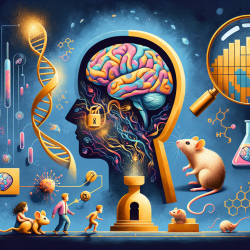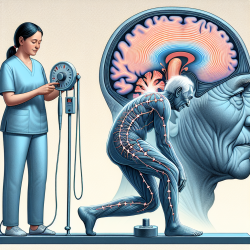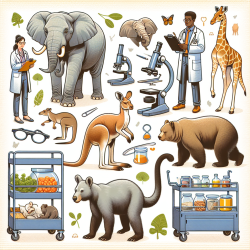Understanding Williams–Beuren Syndrome Through Mouse Models
Williams–Beuren syndrome (WBS) is a fascinating genetic disorder that provides unique insights into the relationship between genes and behavior. Characterized by hypersociability, cognitive impairments, and distinct facial features, WBS is caused by deletions on chromosome 7q11.23. Recent research using mouse models has shed light on the genetic underpinnings of this syndrome, offering valuable information for practitioners working with children affected by similar developmental challenges.
The Study: Induced Chromosome Deletions in Mice
The research conducted by Li et al. (2009) explored the effects of induced chromosome deletions in mice, mirroring the genetic deletions seen in WBS. By creating partial deletions on mouse chromosome 5G2, the researchers were able to replicate key aspects of WBS, including hypersociability and cognitive deficits. This study provides a robust model for understanding the genetic contributions to the syndrome's behavioral and cognitive features.
Key Findings and Implications for Practitioners
- Hypersociability: Mice with proximal deletions (PD) exhibited increased sociability, similar to the outgoing personalities observed in individuals with WBS. This finding highlights the potential role of specific genes in regulating social behavior, offering a target for therapeutic interventions aimed at managing hypersociability in children.
- Cognitive Impairments: Distal deletions (DD) in mice were associated with cognitive deficits, mirroring the uneven cognitive abilities seen in WBS. Understanding the genetic basis of these impairments can inform the development of targeted educational strategies to support cognitive development in affected children.
- Neuroanatomical Changes: The study also revealed structural brain changes in mice, such as reduced brain size and increased neuronal density in specific regions. These findings underscore the importance of considering neuroanatomical factors when designing interventions for children with WBS.
Applying Research Insights to Practice
For practitioners working with children with developmental disorders, the insights gained from this study can be transformative. By understanding the genetic and neuroanatomical factors contributing to hypersociability and cognitive impairments, therapists can tailor their approaches to better meet the needs of their clients. Here are some practical applications:
- Targeted Social Skills Training: Incorporating strategies that address the genetic basis of hypersociability can help children develop appropriate social interactions and reduce overfriendliness towards strangers.
- Cognitive Support Strategies: Educational interventions that focus on strengthening cognitive abilities, particularly in areas identified as weak due to genetic factors, can enhance learning outcomes.
- Neurodevelopmental Assessments: Regular assessments of brain structure and function can help identify specific areas of need, allowing for more personalized intervention plans.
Encouraging Further Research
While this study provides valuable insights, it also highlights the need for continued research into the genetic and neuroanatomical aspects of WBS. Practitioners are encouraged to stay informed about ongoing research and consider participating in studies that explore new therapeutic approaches. By contributing to the body of knowledge on WBS, practitioners can help advance the field and improve outcomes for children with this syndrome.
To read the original research paper, please follow this link: Induced chromosome deletions cause hypersociability and other features of Williams–Beuren syndrome in mice.










